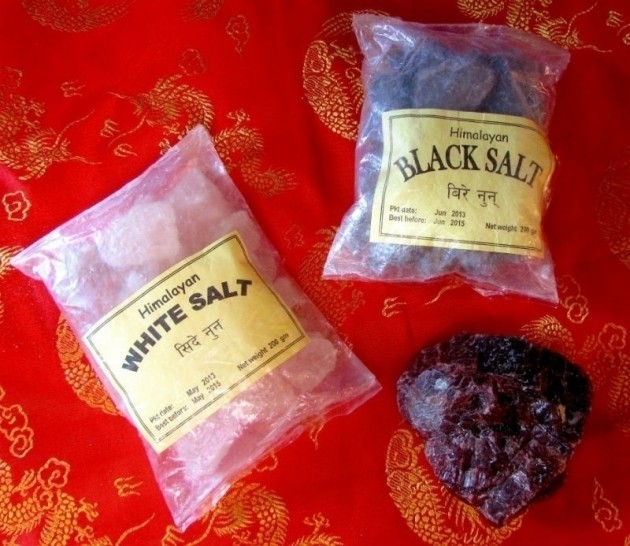Adapted from "Nutritional Therapies for Fibromyalgia Syndrome", written by Kristi Hughes, ND
Fibromyalgia is a syndrome characterized by generalized musculoskeletal pain and stiffness, chronic aching, fatigue, and multiple areas of local tenderness that can be identified during physical examination. Research studies suggest that fibromyalgia pain may be the result of a combination of factors affecting the activity of muscle cells and the central nervous system. Various conventional treatment modalities have been tested in fibromyalgia patients; unfortunately, these are often ineffective and may result in adverse side effects. A natural approach that incorporates nutritional support for the body processes implicated in the pathenogenes is of fibromyalgia holds great promise for the millions suffering from this chronic syndrome.
Fibromyalgia (FM) is a syndrome that presents with concurrent signs and symptoms characterized by fatigue;
widespread musculoskeletal pain; and tenderness at specific sites in the neck, spine, shoulders, and hips referred to
as "tender points". Sleep disturbances, morning stiffness, headaches, irritable bowel syndrome (IBS), depression, and anxiety are also commonly associated with this syndrome.
Fibromyalgia (FM) Pathology
Because FM is a multi-factoral syndrome that involves a wide range of bodily processes, treating biochemical pathology is helpful. A good treatment program addresses the four main areas that have established roles in the etiology or progression of the disease. These include mitochondrial dysfunction, hypothalamus-pituitary-adrenal (HPA) dysregulation, toxicity, and intestine/nervous system abnormalities.
Mitochondrial Dysfunction
Malfunction of mitochondria is believed to be a primary factor in the etiology of FM, and abnormalities of the mitochondrial membranes in these patients have been reported. Mitochondria, which are concentrated in muscle tissue, are often referred to as the "powerhouses" of the cells due to their role in energy (ATP) production. Compromised mitochondrial activity can result in alterations in muscular function, as well as nervous, immune, and cardiac dysfunction.
Certain nutritional factors play a role in maintaining the integrity and proper functioning of the mitochondria. The
following formulas have been used in FM patients in clinical settings:
Mitochondrial Antioxidant Formula: A combination of nutrients known to positively influence mitochondrial energy production, along with antioxidants, may support a higher rate of ATP synthesis, as well as protect mitochondria from free radicals. Nutrients such as lipoic acid and B vitamins serve as cofactors for cellular energy production and metabolism; thiamin supports the activity of enzymes that influence citric acid cycle activity and activities of the respiratory chain; amino acids like creatine allow muscles to regenerate ATP, and N-acetyl-L-carnitine helps transport nutrients (i.e. fatty acids) into the mitochondria for energy production. Furthermore, antioxidants such as coenzyme Q 10, L-glutathione, N-acetylcysteine, and vitamins C and E help prevent oxidative damage that can affect cellular and/or mitochondrial function negatively.
Malic Acid/Magnesium Aspartate Complex: Malic acid is a natural compound that is necessary for ATP production.8 Combined supplementation with 1,200 mg of malic acid and 300 mg magnesium administered in a dose-escalated fashion produced significant reductions in the severity of 3 primary pain/tenderness measures
in FM patients. In another study, supplementation with malic acid (1,200-2,400 mg) and magnesium (300-600 mg) resulted in subjective improvements in myalgia within 48 hours and reduced tender point index scores were recorded at 8 weeks.
Magnesium/Potassium Aspartate Complex: Magnesium, potassium, and aspartate have roles in intermediary metabolism (enzyme-catalyzed processes that extract energy from nutrients to build new cells) that may mitigate physical fatigue. In a study examining the effects of potassium, magnesium, and aspartate (1,000 mg potassium aspartate and 1,000 mg magnesium aspartate per day for 1-2 weeks) on 4 subjects undergoing extremely fatiguing physical exercise, non-athletes demonstrated improved physical endurance.10 Potassium-magnesium-aspartate supplementation of 1.75 g every 6 hours for 4 days was shown to prolong exercise capacity. Researchers postulate that the mechanism behind this anti-fatigue effect was the resynthesis of ATP and phosphocreatine.
HPA Dysregulation
Many patients with FM have had exposure to significant life stress and/or have inordinate responses to daily
life stressors.12 Altered reactivity of the hypothalamic-pituitary-adrenal (HPA) axis, resulting in hyposecretion of adrenal androgens (e.g. cortisol) has been observed in these patients.13 One study has postulated that HPA dysfunction may involve serotonergic neurotransmission and alterations in the activity of arginine-vassopressin (AVP) and corticotrophin-releasing hormone (CRH).
HPA dysregulation is far-reaching and can interfere with proper functioning of the hypothalamus-pituitary-thyroid (HPT) axis. Neuroendocrine abnormalities along the HPT axis are also common in FM patients. Furthermore, due to the association between hypothyroidism and fibrositis and myalgia, it is recommended that FM patients be given a comprehensive thyroid hormone test.
The use of adaptogens-herbs that help normalize bodily processes and increases the ability to "adapt" to stress-and B vitamins provide a general approach to managing stress.
Traditional Holy Basil Combination: Adaptogens such as holy basil (Ocimum sanctum), ashwaganda (Withania somnifera), and brahmi (Bacopa monnieri) have a history of use in Ayurvedic medicine and are scientifically well supported to improve stress tolerance. Ashwaganda was shown to enhance adaptability to both physical and chemical stress in animals, showing the ability to suppress adrenal enlargement, as well as adrenal ascorbic acid and corticosterone depletion. Ashwaganda also produces positive changes in stress-related prostaglandin and catecholamine production. In other animal testing, brahmi was shown to improve adaptations in sensory, motor, and motivational systems. In humans, it exhibits beneficial effects on anxiety, as well as mental functions such
as mental fatigue.
6/Pantothenic Acid Complex: The B vitamins, pantothenic acid and B are important in energy production and the response to stress by supporting adrenal hormone production and regulation. In conjugation with ATP and cysteine, pantothenic acid plays an integral role in the synthesis of coenzyme A, which initiates various metabolic processes including the production of glucocorticoids. In an animal study, vitamin B was found to stimulate the secretion of adrenal catecholamines.
Thyroid Support: While normalizing stress-induced changes in HPA function will have a positive influence on the HPT axes, some patients may need additional thyroid support. Several nutrients are known to support healthy thyroid hormone synthesis, to promote the conversion of thyroxine (T4) to the more bioactive triiodothyronine (T3), and to address receptor dynamics and the expression of thyroid hormone sensitive genes. Such nutrients include iodine, selenium, zinc, and vitamins E, A, and D.
Toxicity
Toxin exposure has been suggested to play a significant role in the development and progression of both FM and CFS, as approximately 47-67% of patients with FM and 53-67% of patients with CFS have reported at least one episode of symptom exacerbation after specific chemical exposure.
Please see Detoxification Section.
Intestine/Nervous System Support
Another area of interest is the link between intestinal dysfunction and FM. Although statistics vary, research suggests that up to 70% of patients with FM complain of symptoms associated with irritable bowel syndrome (IBS). IBS is a functional disorder characterized by chronic abdominal pain with alternating diarrhea, and constipation. In comparison with healthy subjects, patients with IBS also tend to experience extra intestinal symptoms that overlap with FM complaints, including increased nerve sensitivity, morning stiffness, headaches, sleep disturbances, and fatigue.
Improved GI health can be achieved with a nutritional regimen known as the 4R® GI Restoration Program, which addresses the four primary stages of healing: Remove, Replace, Reinoculate, and Regenerate. For more information on the 4R Program, please see page 90.
Natural Treatment Approaches
An important nutritional foundation for optimal health and healing in both healthy individuals and patients suffering from chronic conditions (e.g. FM) includes a diet rich in fruits and vegetables, an adequate intake of omega-3 fatty acids, and a balanced multivitamin/mineral supplement.
Suggested Nutritional Supplementation
- Fibroplex - 2 tablets 4 times daily for one week; then 2 tablets 2 times daily for 7 weeks.
Nutritional support for neuromuscular function.
- Mitochondrial Resuscitate - 1-2 capsules 3 times daily in between meals.
Support for cellular energy production.
- 5 Hydroxytryptophan Extra Strength - 1-2 tablets twice daily in between meals.
5HTP is the precursor to seritonin, altered seritonin levels have been associated with fibromyalgia.
- AdvaClear and UltraInflamX - Bifunctional Detoxification with nutritional support for inflammation. (see
Detoxification section).
- Endefen - 2 tablespoons twice daily for the repair and enhance the GI immune system function
Multi-dimensional support for GI health.
- Ultra Flora Plus DF - mix ¼- ½ teaspoon twice daily mixed with Endefen.
Dairy-free advanced probiotic nutrition with fructooligosaccharides.
- DHEA - 1-2 capsules two times daily.
DHEA deficiency is common in fibromyalgia patients. DHEA is a 99.5% pure pharmaceutical grade food supplement in
a hypoallergenic rice starch base.
If patient has sleep disturbance add:
- BenesomTM - One tablet one hour before bedtime
Benesom is formulated to promote a restful, relaxed state and relieve occasional sleeplessness by beneficially modulating the metabolism of melatonin and GABA.
Dietary Suggestions
FirstLine Therapy® Diet
Can monosodium glutamate trigger fibromyalgia? Four women with fibromyalgia (duration of illness,
2-17 years) who had previously received multiple treatments with limited success had complete or nearly complete resolution of their symptoms within months after eliminating monosodium glutamate (MSG) or MSG plus aspartame from their diet. In each patient, symptoms recurred whenever MSG was ingested.Comment: MSG and aspartate (one of the two amino acids present in aspartame) acts as excitatory neurotransmitters, and can lead to neurotoxicity when used in excess. Research suggests that MSG alone, or MSG plus aspartame, may be a cause of symptoms in some patients with fibromyalgia. Because neither MSG nor aspartame is a necessary component of the diet, a therapeutic trial of avoiding these substances seems worthwhile for patients with fibromyalgia.
Additional Considerations
Frequency specific microcurrent has also been clinically effective in managing pain associated with fibromyalgia.
Fibromyalgia References
1. National Institute of Arthritis and Musculoskeletal Skin Diseases. National Institutes of Health. Fibromyalgia. Retrieved July 2, 2002 from http://www.niams.gov/hi/topics/fibromyalgia/fibrifs.htm
2. Arthritis Foundation Disease Center. Fibromyalgia Retrieved July 22, 2002 from http://www.arthritis.org/conditions/DiseaseCenter/fibromyalgia/asp
3. Horrocks LA, Yeo, YK. Health benefits of docosahexaenoic (DHA). PharmacolRs 1999;40(3):211-25.
4. Kwong LK, Kamzalov S, Rebrin I, et al. Effects of coenzyme Q(10) administration on its tissue concentrations, mitochondrial oxidant generation, and oxidative stress in the rat. Free Radic Biol Med 2002;33(5):627-38.
5. Dlugosz A, Piotrowska D. Lipid peroxidation stimulated by Solvesso, Bawanol and methanol, and its counteraction by antioxidants in human placental mitochondria. Toxicol In Vitro 2002;16(6):649-56.
6. Custodio JB, Carduso CM, Almeida LM. Thiol protecting agents and antioxidants inhibit the mitochondrial permeability transision promoted by etoposide: implications in the prevention of etoposide-induced apoptosis. Chem Biol Interact 2002;140(2):169-84.
7. Nakai A, Shibazaki Y, Taniuchi Y, et al. Vitamins ameliorate secondary mitochondrial failure in neonatal rat brain. Pediatr Neurol 2002;27(1):30-35.
8. Werbach MR. Nutritional strategies for treating chronic fatigue syndrome. Altern Med Rev 2000;5(2)93-108.
9. Abraham GE, Flechas JD. Management of fibromyalgia: rationale for the use of magnesium and malic acid. J Nutr Med 1992;3:49-59.
10. Nagle FJ, Balke B, Ganslen R et al. The mitigation of physical fatigue with "spartase". FAA Office of Aerospace Medicine 1963;63-12:1-10.
11. Ahlborg B, Ekelund LG, Nilsson CG. Effect of potassium-magnesium-aspartate on the capacity for prolonged exercise in man. Acta Physiol Scand 1968;74:238-45.
12. Littlejohn GO, Walker J. A realistic approach to managing patients with fibromyalgia. Curr Rheumatol Rep 2002;4(4):286-92.
13. Dessein PH, Shipton EA, Joffe BI et al Hyposecretion of adrenal androgens and the relation of serum adrenal steroids, serotonin and insulin-like growth factor-1 to clinical features in women with fibromyalgia. Pain 1999;83(2):313-19.
14. Demitrack MA, Crofford LJ. Evidence for and pathophysical implications of hypothalamic-pituitary-adrenal axis dysregulation in fibromyalgia and chronic fatigue syndrome. Ann NY Acad Sci 1998;840:684-97.
15. Wolfe F. The clinical syndrome of fibrositis. Am J Med 1986;81:7-13.
16. Masi AT, Yunus MB. Concepts of illness in populations as applied to fibromyalgia syndromes. Am J Med 1986;81:19-25.
17. Smythe HA. Nonarticular Rheumatism and Psychogenic Musculo-skeletal Syndromes. In:McCarty DJ, ed. Arthritis and Allied Conditions. 9th ed. Philadelphia: Lea
18. Goldenberg DL, Simms RW, Greiger A, et al. High frequency of fibromyalgia in patients with chronic fatigue seen in a primary care practice. Arthritis Rheum1990;33:381-87.
19. Campbell SM, Clarks, Tindall, EA, et al. Clinical characteristics of fibrositis. A blinded controlled study of symptoms and tender points. Arthritis Rheum 1983;26:817-24.
20. Henrickson KG, Bengston A. Fibromyalgia-a clinical entity? Can J Physiol Pharmacol 1991;69:692-77.
21. Sen P, Maiti PC, Puri S, et al. Mechanism of anti-stress activity of Ocimum sanctum Linn, eugenol and Tinospora malabarica in experimental animals. Indian J Exp Biol 1992;30(7):592-96.
22. Mishra LC, Singh BB, Dagenais S. Scientific basis for the therapeutic use ofWithania somnifera (ashwaganda): a review. Altern Med Rev 2000;5(4):334-46.
23. Singh A, Saxena E, Bhutani KK. Adrenocorticosterone alterations in male, albino mice treated with Trichopus zeylanicus, Withania somnifera, and Panax ginsengpreparations. Phytother Res 2000;14(2):122-25.
24. Singh HK, Rastogi RP, Srimal RC, et al. Effect of bacosides A and B on avoidance responses in rats. Phytother Res 1998;2(2):70-75.
25. Fidanaza A, Floridi S, Lenti L. Panthenol and glucocorticoids. Boll Soc Ital Biol Sper 1981:57(18):1869-72.
26.
|
27. Fidanaza A, Floridi S, Lenti L. Panthenol and glucocorticoids. Boll Soc Ital Biol Sper 1981;57(18):1869-72.
28. Witchl M. Herbal drugs and phytopharmaceuticals. London:CRC Press;1989.
29. Brown KM, Arthur JR. Selenium, selenoproteins and human health: a review. Public Health Nutr 2001;4(2B):593-99.
30. Nishiyama S, Futagoishi-Suginohara Y, Matsukara M, et al. Zinc supplementation alters thyroid hormone metabolism in disabled patients with zinc deficiency. J Am Coll Nutr 1994;13(1):62-67.
31. Gupta P, Kar A. Cadmium induced thyroid dysfunction in chicken: hepatic type I iodothyronine 5'-monodeiodinase activity and role of lipid peroxidation. Comp Biochem Physiol C Pharmacol Toxicol Endocrinol 1999;123(1):39-44.
32. Pallet V, Audouin-Chevallier I, Verret C, et al. Retinoic acid differentially modulates triiodothyronine and retinoic acid receptors in rat liver according to thyroid status. Eur J Endocrinol 1994;13(4):377-84.
33. Shrader M, Muller KM, Nayeri S, et al. Vitamin D3-thyroid hormone receptors heterodimer polarity directs ligand sensitivity of transactivation. Nature 1994;370 (6488):382-86.
34. Chang L. The association of functional gastrointestinal disorders and fibromyalgia. Eur J Surg Suppl 1998;583:32-36. Canataroðlu Y, Gümürdülu Y, Erdem A, et al. Prevalence of fibromyalgia in patients with irritable bowel syndrome. Turk J Gastroenterol 2001;12(12)141-44.






